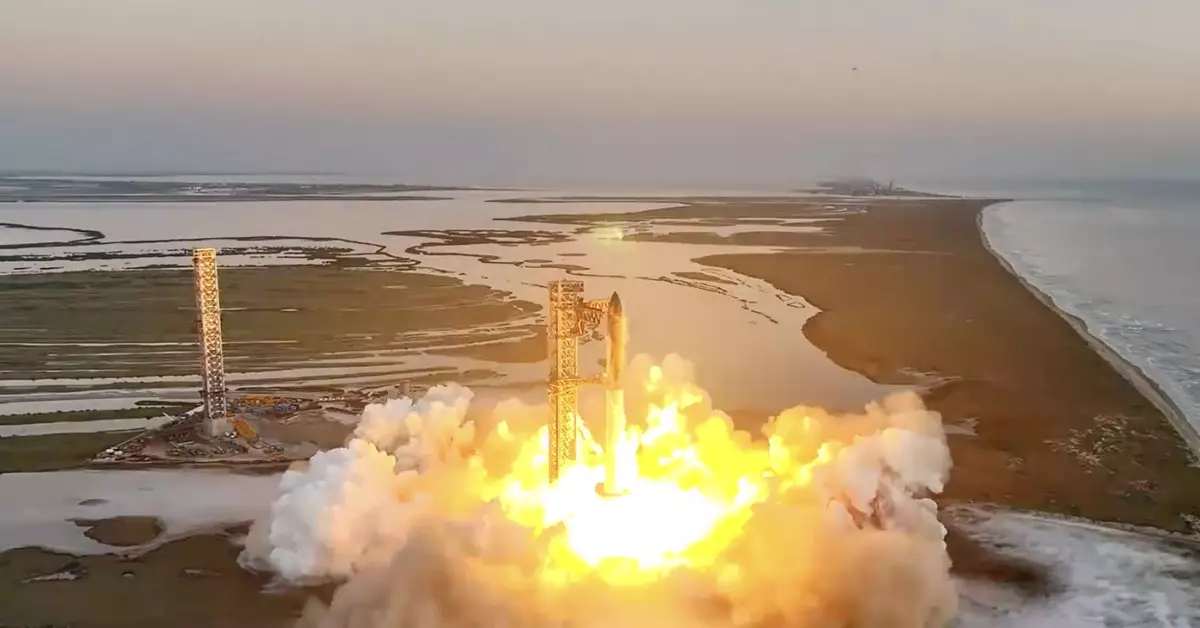On October 12, 2023, SpaceX successfully conducted the fifth flight test of its Starship spacecraft, marking a significant milestone in the company’s ambitious quest for interstellar travel. Launched from its South Texas facility at precisely 8:25 AM ET, this test not only emphasized SpaceX’s commitment to reusability but also showcased advanced recovery techniques that could revolutionize the aerospace industry.
A standout feature of this flight was the successful recovery of the Starship Super Heavy booster, a notable achievement for SpaceX. During previous tests, the booster had struggled to return without complications, resulting in failures that raised concerns about the future of reusable rocket technologies. However, this time, SpaceX executed a remarkable maneuver using its innovative landing system known as the “chopsticks.” These robotic arms on the launch tower effectively captured the booster, demonstrating not just recovery capability, but the precision engineering that defines SpaceX’s approach to space exploration.
It’s important to recognize that this successful test was facilitated by the prompt approvals from the Federal Aviation Administration (FAA). Initially, SpaceX anticipated a November timeline for the test, but the FAA’s expedited process allowed for an earlier launch. This quick turnaround not only underscores the significance of regulatory bodies in shaping the landscape of aerospace endeavors but also highlights SpaceX’s ability to adapt and implement changes swiftly. Such agility is crucial in a sector where timelines can frequently shift due to bureaucratic hurdles or safety assessments.
As SpaceX prepares for the next phase of the Starship program, the next pivotal step involves returning the spacecraft itself, scheduled to splash down in the Indian Ocean, similar to previous tests. This two-part recovery process—the booster catch and spacecraft splashdown—will further validate the robustness of SpaceX’s reusable rocket designs. The success in both elements will significantly move the company closer to its ultimate goal of efficient, multi-use spacecraft capable of supporting missions to the Moon, Mars, and beyond into deep space.
SpaceX’s fifth flight test of Starship represents a noteworthy leap towards the future of space exploration and rocket reusability. The successful ‘catch’ of the Super Heavy booster, along with the rapid progression facilitated by the FAA, encapsulates a broader trend in aerospace where innovation meets regulation in real-time. This dual achievement not only positions SpaceX as a leader in space technology but also sets a precedent for the future of space travel, with implications that could extend far beyond our planet. As we stand on the cusp of a new era in space exploration, the eyes of the world will no doubt remain focused on the skies, watching for SpaceX’s next groundbreaking milestones.

